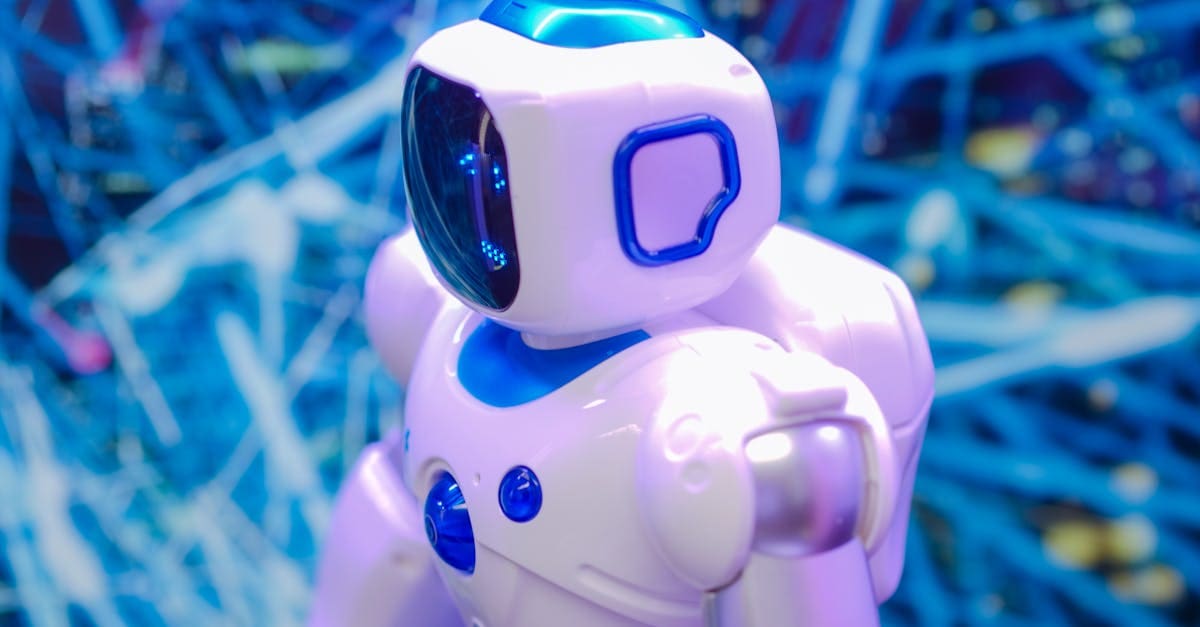7 AI Emotional Intelligence Hacks for Better Human-Machine Interaction
Imagine trying to have a conversation with a robot, only to realize it understands your feelings as well as your words. That’s the magic of AI emotional intelligence. It’s like giving machines a pair of emotional glasses, allowing them to recognize our emotions and respond in a more human way. But why does this matter to you and me? Because as our world becomes increasingly intertwined with technology, ensuring these interactions are meaningful and empathetic can make all the difference in our daily experiences and connections.
Understanding emotions isn’t just about making robots more ‘human’. It’s about enhancing human-robot interaction so these machines can assist us better, whether in a workplace, a college, or even in our homes. Think of it like teaching a robot to pick up on emotional cues, such as frustration or happiness, to react in ways that genuinely help instead of hinder. And as we explore the nuances of this technology, we must also consider ethical considerations, such as privacy and emotional data security, to ensure trust and safety in these interactions.
Curious to discover these hacks and how they can transform the way machines interact with us? Dive into the article and unlock the secrets of emotional synergy between humans and technology.

Photo provided by Kindel Media on Pexels
In the article
- AI Emotional Intelligence
- Robotic empathy and Affective Computing
- Emotion Recognition AI
- Implications of AI Empathy Development
AI Emotional Intelligence
Understanding the Basics
When it comes to understanding AI emotional intelligence, it’s fascinating to see how these systems can detect emotions through data analysis. Imagine a machine that can understand if you’re happy or frustrated just by looking at your face or listening to your voice. AI uses powerful algorithms to analyze facial expressions and voice tones, allowing it to recognize distinct emotions like joy or sadness. But how does this actually work? Well, it all boils down to analyzing distinct emotional expressions and patterns. The more data AI processes, the better it becomes at identifying what someone might be feeling.
Moreover, AI emotional intelligence links closely with the development of human interaction emulation. The goal is not just to detect emotions but also to respond appropriately. For instance, if you’re upset, a smart AI system might suggest a solution or offer words of comfort. This kind of interaction is becoming increasingly common in customer service, where AI systems can provide support that feels tailor-made for the user’s emotional state. By analyzing the data, these systems learn to adapt and provide responses that feel almost human.
Key Technologies
To achieve this level of emotional intelligence, facial and voice recognition tools play a crucial role. These tools scan a user’s face for micro-expressions or listen to changes in voice pitch. By doing so, they gather critical data needed for analyzing emotions. For example, a slight frown might indicate sadness, while a raised voice might suggest excitement or anger. The magic happens when these tools are integrated with sophisticated AI algorithms that can interpret the data efficiently.
However, it’s not just about recognizing emotions. The real challenge lies in ensuring the system can provide a robust emotional response. This involves building algorithms capable of understanding context and giving suitable feedback. Take the healthcare sector as an example, where AI systems are utilized to assess patient well-being by analyzing emotional cues. This technology ensures that patients receive care tailored to their emotional needs, enhancing their overall experience.
Benefits and Challenges
There’s no doubt that AI emotional analysis enhances human-machine interaction. It makes conversations with machines feel personal, enriching experiences in various fields such as education and customer service. Yet, with these benefits come significant challenges, especially regarding ethics and privacy. Collecting and analyzing emotional data raises questions like, “Who owns this data?” and “How secure is it?” Ensuring that AI systems don’t infringe on personal privacy is crucial as these technologies continue to evolve.
Moreover, developers must address potential biases within the datasets used for training AI. AI emotional intelligence must be fair and unbiased, recognizing emotions across diverse populations accurately. Biased data can result in systems that misinterpret emotions, leading to less effective interactions. Therefore, ensuring equality in data representation remains a significant focus for AI developers worldwide.

Photo provided by Google DeepMind on Pexels
Robotic Empathy and Affective Computing
The concept of robotic empathy may seem like something out of a science fiction novel, but it’s becoming a reality. This idea focuses on enhancing human-robot interactions by simulating an understanding of human emotions. The potential applications are vast, impacting how we interact with machines daily. On the other hand, affective computing refers to systems that not only understand emotions but also respond to them appropriately. This approach significantly impacts fields like mental health, where computers can identify emotional distress and suggest coping mechanisms.
- Robotic empathy concepts explore artificial systems showing emotion-like understanding without feeling emotions themselves.
- Affective computing roles involve developing systems that sense human emotions and react accordingly to improve experiences.
Together, robotic empathy and affective computing lead to improved emotional AI applications. By focusing on empathy, AI systems can bridge the emotional gap between humans and machines, making interactions smoother and more meaningful. This isn’t merely about understanding words but also about acknowledging the emotions behind them. For example, a social robot programmed with affective computing could actively engage a child in a learning activity, responding to frustration with encouragement and praise.
AI Empathy Development
Developing AI empathy involves creating systems that can recognize and respond to human emotions genuinely. The focus is on emotional response mechanisms that enhance user trust. A system that can effectively communicate empathy and understanding builds a stronger connection with its users. This notion is particularly important in customer service, where an empathetic response can turn a negative experience into a positive one.
Moreover, AI systems designed with empathy in mind can better cater to the emotional needs of users. By providing solutions that reflect understanding and care, these systems foster loyalty and trust. This user-centric approach is at the heart of many advancements in AI, aiming to create a more engaging and personalized experience for everyone interacting with technology.
Social Robots’ Role
Social robots play a vital role in bridging the gap between humans and machines by enhancing emotional connections. These robots are designed to interact with people in ways that feel natural and intuitive. They facilitate social engagement by recognizing human emotions and responding in ways that align with social norms and expectations. Imagine a robot companion that can cheer you up on a bad day or help manage stress through conversation.
These robots have the potential to significantly impact areas where emotional support is crucial, such as caring for the elderly or assisting individuals with special needs. By understanding and responding to emotions, social robots can provide companionship and emotional support, improving the quality of life for many users. The role of social robots is continually expanding, making strides in areas where emotional interaction is beneficial.

Photo provided by Pavel Danilyuk on Pexels
Emotion Recognition AI
Techniques
The techniques behind emotion recognition AI are as intriguing as they are complex. Analyzing facial data involves studying micro-expressions, while voice analysis focuses on tone and pitch changes. In doing so, AI systems gather a wealth of information about a person’s emotional state. These technologies have applications beyond just personal devices; they are used in sectors like marketing, where understanding customer emotion can lead to more effective advertising strategies.
Furthermore, recognizing emotions helps tailor experiences to the user. When interacting with an AI system that knows you’re happy or sad, you’re more likely to engage positively. This capability is transformative, especially in environments like education, where systems can adjust teaching methods based on student emotions. Thus, emotion recognition AI promotes a more connected and intuitive interaction between humans and machines.
Impact on Human-Robot Interaction
The impact of emotion recognition AI on human-robot interaction is profound. It creates opportunities for more meaningful engagements that transcend simple task execution. By recognizing emotional cues, robots can respond in ways that are contextually appropriate, enhancing the interaction quality. This leads to better communication, as robots can adjust their behavior based on a person’s mood or emotional needs.
In settings like healthcare, the ability for robots to understand emotions fosters a more supportive environment for patients. By responding to emotional distress with suitable actions or words, robots can provide comfort and reassurance, which is crucial for patient care. Through these interactions, robots become more than just machines; they become partners in enhancing human well-being.
AI Emotional Analysis
With the help of AI emotional analysis, systems can examine emotional responses using big data to gain insights into human behavior. This capability allows for the creation of more tailored and personalized experiences. For instance, in gaming, emotional analysis can adjust difficulty levels based on player emotional responses, ensuring an engaging and enjoyable experience. This method ensures that each interaction feels unique and tailored to the individual’s preferences and needs.
Utilizing big data in this way empowers AI systems to anticipate user needs and wants more efficiently. As a result, these systems can provide solutions or suggestions that align closely with user expectations, enhancing satisfaction and enjoyment. With ongoing advancements in AI emotional analysis, the potential for innovation in personalized technology continues to grow, paving the way for a future where human emotions are deeply integrated into digital experiences.

Photo provided by Pavel Danilyuk on Pexels
Implications of AI Empathy Development
The implications of developing empathy in AI are vast, especially in exploring emotional AI applications. From education to customer service, AI systems that can recognize and respond to emotions offer personalized user experiences. In education, AI can adapt to various learning styles, offering support tailored to the student’s emotional state. Similarly, in customer service, AI can improve user satisfaction by providing empathetic responses that address the user’s needs effectively.
Emotional AI Applications
Beyond typical applications, emotional AI is also seen in industries like healthcare, where personalized medicine depends on understanding patient emotions. This approach transforms industries by ensuring that user experiences are not only efficient but also emotionally engaging. When AI considers emotional states, it creates an environment where users feel understood and valued, leading to increased interaction quality and user loyalty.
The ability to adapt responses based on emotions makes AI a powerful tool for creating meaningful connections. Whether in a classroom or a retail store, emotional AI transforms how users interact with technology, making every experience more personal and memorable. This transformative power is why emotional AI applications continue to expand across industries, constantly evolving to meet the diverse emotional needs of users worldwide.
Robotic Emotional Response
The ability of robots to adapt and respond to human emotions marks a significant advancement in human-machine interaction. This capability allows robots to facilitate improvements in interaction quality by matching their responses to the user’s emotional state. Whether by providing comforting words during a tough time or encouraging actions that promote positivity, robots equipped with emotional intelligence play a crucial role in enhancing user experiences.
Moreover, these robotic systems are not limited to individual interactions. In collaborative environments, they improve team dynamics by recognizing and responding to emotional cues, helping to maintain a harmonious and effective workflow. As technology advances, robots are increasingly playing active roles in environments where emotional intelligence is critical. These roles support the well-being and productivity of human teams by contributing emotionally intelligent responses that foster a positive working environment.
Future Trends
Looking ahead, the future trends in AI emotional intelligence suggest continuous evolution that shapes industries. The potential for AI to transform how we interact with machines is endless, but the ethical use of these technologies becomes essential. As AI continues to grow and integrate into our daily lives, balancing technological advancement with ethical considerations is vital. Ensuring that emotion-based AI systems are used responsibly and with respect for user privacy will be crucial as we navigate these future trends.
Finally, while AI emotional intelligence presents incredible opportunities, it also challenges us to consider how these systems impact society. By addressing these challenges head-on and fostering a culture of ethical development, we can ensure that AI continues to enhance our lives while respecting our emotional and privacy needs. This balance will ultimately determine how successfully AI emotional intelligence integrates into the fabric of our society.
Conclusion
Reflecting on our discussion, it’s clear that enhancing AI’s ability to understand emotional nuances can significantly improve how we interact with machines. By recognizing emotional patterns and responding appropriately, we can create more meaningful and effective human-machine interactions. This understanding can lead to better customer experiences and foster trust between brands and consumers.
Moving forward, I suggest focusing on the ethical aspects and privacy concerns that come with using technology to analyze emotions. Engaging in open discussions about data use and ensuring transparency in AI applications will help build trust and address any hesitations the public might have. It’s essential to balance the technology’s benefits with responsible use to prevent potential biases and discrimination.
To contribute actively, consider sharing this post with others interested in AI’s evolving role in understanding emotions. Keep an eye on new developments and participate in conversations that aim to align AI advancements with ethical considerations. By staying informed, you play a crucial role in shaping a future where technology and empathy coexist harmoniously.







